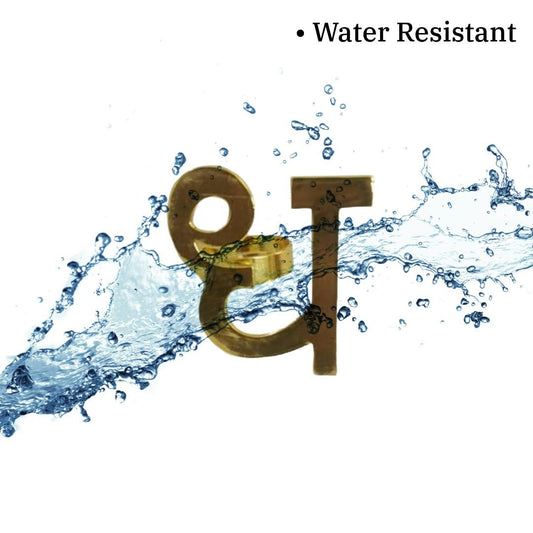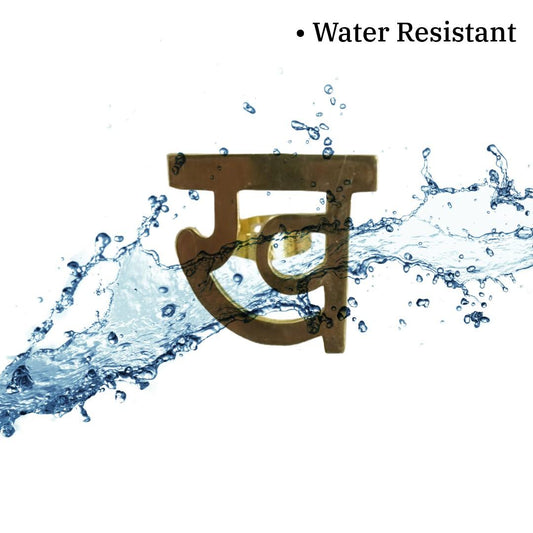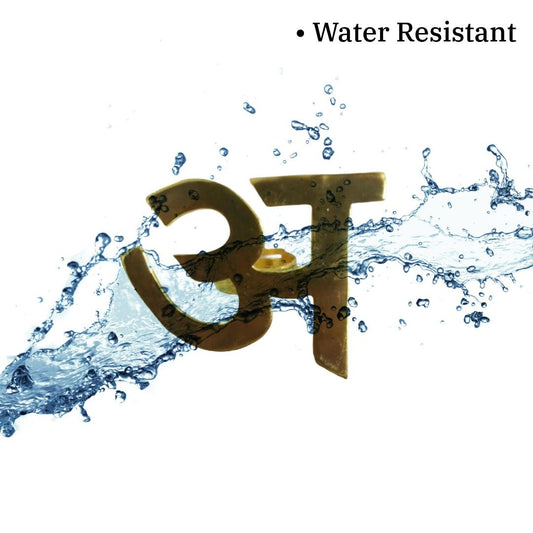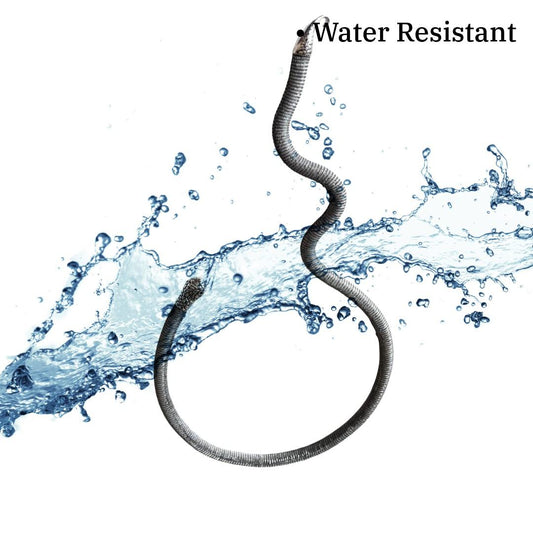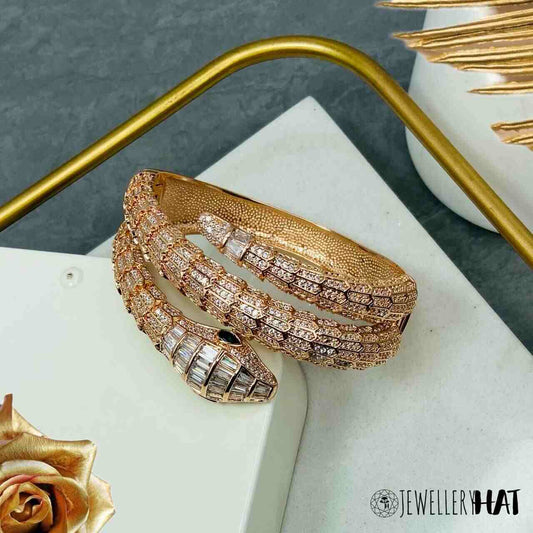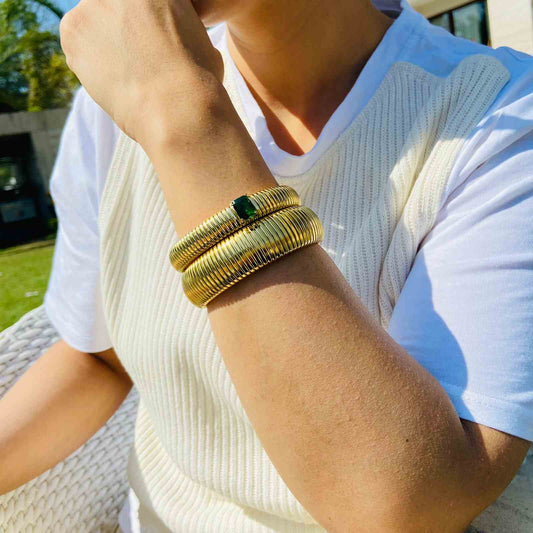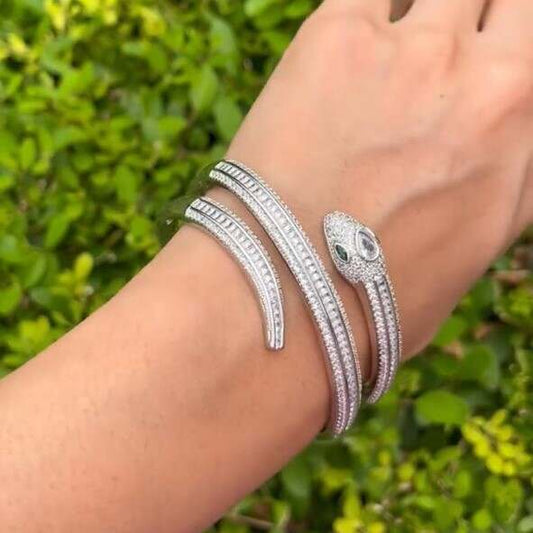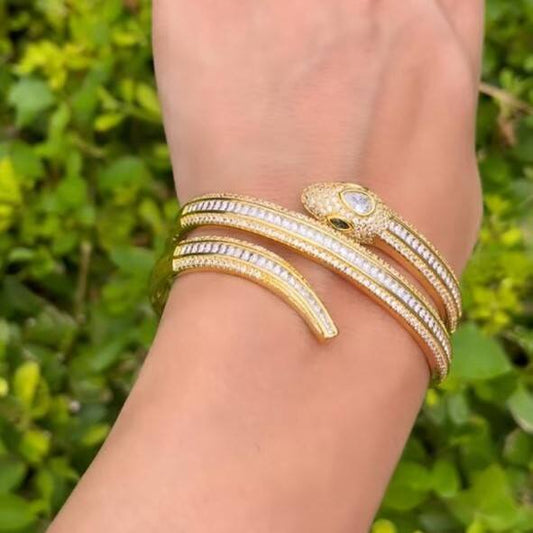When investing in high-end jewelry, one key question often arises: Does expensive jewelry tarnish? The assumption that pricier pieces are immune to tarnishing is a common misconception. In reality, even the most luxurious jewelry can experience tarnishing under certain conditions. In this blog, we will explore why expensive jewelry might tarnish, the science behind tarnishing, and effective strategies to prevent and manage tarnish. We will also highlight how Jewellery Hat, India’s fastest-growing fashion jewelry brand, addresses tarnish issues with advanced anti-tarnish technology and offers a lifetime replacement warranty on polishing.
Understanding Tarnishing: The Basics
To understand why expensive jewelry can tarnish, it’s important to first grasp what tarnishing is and the factors that contribute to it.
What is Tarnish?
Tarnish is a chemical reaction that causes a metal’s surface to become discolored or dull. This process typically involves the interaction of the metal with sulfur compounds, moisture, and oxygen, leading to oxidation. Tarnishing is common in metals like silver, copper, and even some gold alloys.
Causes of Tarnish
- Exposure to Air: Oxygen in the air reacts with metals, leading to oxidation and tarnish formation. For instance, silver exposed to air can form silver oxide, which causes a darkened appearance.
- Sulfur Compounds: Sulfur compounds, such as hydrogen sulfide, found in environmental pollutants or even certain foods, can react with metals like silver and copper, leading to tarnish.
- Moisture: High humidity or contact with water can accelerate tarnishing by promoting oxidation and corrosion.
- Acidic Substances: Acids in skin oils, sweat, and some cosmetics can react with metals, contributing to tarnish.
With this understanding, it’s clear that expensive jewelry is not exempt from tarnishing.
Does Expensive Jewelry Tarnish?
Does expensive jewelry tarnish? The answer is yes. Despite its higher cost, luxury jewelry can tarnish due to several factors. The price of jewelry is not a guarantee against tarnishing. Factors such as the metal’s composition, environmental exposure, and maintenance practices play significant roles in whether a piece will tarnish over time.
Metal Composition
-
Gold: Pure gold (24K) is less likely to tarnish because it is not highly reactive. However, gold alloys (like 14K or 18K gold) can tarnish depending on the other metals mixed with it. For instance, gold mixed with silver or copper can tarnish if the alloy reacts with sulfur or moisture.
-
Silver: Sterling silver (92.5% silver and 7.5% other metals, usually copper) is particularly prone to tarnishing. The copper content reacts with sulfur compounds in the air, leading to tarnish. Even though sterling silver is often used in high-end jewelry, it still tarnishes.
-
Platinum: Platinum is highly resistant to tarnishing due to its stable chemical properties. It does not react easily with sulfur or moisture, making it a durable choice for fine jewelry.
-
Stainless Steel: Stainless steel is known for its resistance to tarnishing and corrosion. Many high-end brands use stainless steel with anti-tarnish treatments to ensure durability and a lasting shine.
Environmental Exposure
Regardless of its price, jewelry exposed to environmental factors such as high humidity, pollutants, or harsh chemicals is at risk of tarnishing. Expensive jewelry worn daily or exposed to lotions, perfumes, and sweat is susceptible to tarnish.
Maintenance Practices
Proper maintenance is crucial for preventing tarnish. Expensive jewelry that is not cleaned or stored correctly can tarnish over time. Regular cleaning and appropriate storage methods are essential for preserving the appearance of high-end jewelry.
The Science Behind Tarnish Prevention
To address tarnishing effectively, it’s important to understand the scientific methods used to prevent it. Here’s how various strategies work:
Barrier Coatings
Barrier coatings provide a protective layer over the metal, preventing tarnishing agents from coming into contact with the jewelry.
- Function: Barrier coatings, such as clear lacquers or rhodium plating, act as shields that prevent tarnishing agents from interacting with the metal.
- Mechanism: These coatings create a barrier that blocks chemical reactions responsible for tarnishing. For instance, rhodium plating provides a durable layer that repels tarnishing agents, preserving the jewelry’s shine.
Anti-Tarnish Treatments
Anti-tarnish treatments involve applying chemicals that inhibit tarnish formation.
- Function: Anti-tarnish treatments neutralize sulfur compounds and other corrosive elements that can cause tarnish.
- Mechanism: Treatments such as anti-tarnish cloths or dips create a protective layer or chemical environment that prevents tarnish. For example, anti-tarnish dips remove existing tarnish and create a protective barrier on the metal surface.
Proper Storage
Proper storage helps minimize exposure to tarnishing agents.
- Function: Storing jewelry in controlled environments reduces its exposure to moisture, pollutants, and chemicals.
- Methods: Use anti-tarnish pouches or cloths, and keep jewelry in a cool, dry place. Proper storage methods help reduce the likelihood of tarnishing.
Regular Cleaning
Regular cleaning removes contaminants that can contribute to tarnish.
- Function: Cleaning eliminates oils, dirt, and other substances that can accelerate tarnishing.
- Methods: Use mild soap and water or specialized jewelry cleaners to maintain the jewelry’s appearance. Regular cleaning helps prevent the buildup of tarnish-causing substances.
How to Prevent Tarnish on Expensive Jewelry
To maintain the beauty of your expensive jewelry and prevent tarnish, consider the following tips:
1. Choose Anti-Tarnish Jewelry
Opt for jewelry with built-in anti-tarnish properties.
- Materials: Stainless steel and rhodium-plated metals are excellent choices for their inherent tarnish resistance. Jewellery Hat, India’s fastest-growing fashion jewelry brand, offers a range of jewelry with advanced anti-tarnish technology, ensuring durability and a long-lasting shine.
2. Apply Barrier Coatings
Apply barrier coatings to protect your jewelry from tarnishing.
- Application: Consider using clear lacquers or rhodium plating to create a protective layer on your jewelry. This layer helps prevent tarnishing by blocking harmful agents.
- Maintenance: Regularly check the coating and reapply if necessary to ensure continued protection.
3. Store Jewelry Properly
Proper storage is essential in preventing tarnish.
- Anti-Tarnish Pouches: Store your jewelry in pouches that help neutralize tarnish-causing agents. These pouches are designed to absorb sulfur compounds and other pollutants.
- Dry Environment: Keep your jewelry in a cool, dry place to minimize exposure to moisture and humidity.
4. Clean Regularly
Incorporate regular cleaning into your jewelry care routine.
- Gentle Cleaning: Use mild soap and water or specialized jewelry cleaners to keep your jewelry free from tarnish-causing contaminants. Avoid abrasive materials that can damage the metal or its coatings.
- Routine Care: Clean jewelry regularly to prevent the buildup of substances that could accelerate tarnishing.
Jewellery Hat: Leading the Way in Anti-Tarnish Jewelry
Jewellery Hat, a prominent name in the fashion jewelry industry in India, is renowned for its exceptional approach to addressing tarnish concerns. As the fastest-growing fashion jewelry brand in the country, Jewellery Hat is committed to offering pieces that not only captivate with their design but also stand the test of time. This commitment is reflected in their use of anti-tarnish technology and high-quality materials. Let’s delve into how Jewellery Hat is leading the way in anti-tarnish jewelry, focusing on their premium stainless steel, advanced anti-tarnish technology, and lifetime replacement warranty on polishing.
1. Premium Stainless Steel
Corrosion Resistance
Jewellery Hat utilizes high-quality stainless steel, a material known for its superior corrosion resistance. The key to stainless steel's resistance to tarnish lies in its composition:
-
Chromium Content: Stainless steel contains chromium, which forms a thin, protective layer of chromium oxide on the surface. This layer acts as a barrier against environmental elements, including moisture and oxygen, which are primary contributors to tarnishing. By preventing direct contact between the metal and tarnishing agents, chromium ensures that the jewelry maintains its shine and appearance over time.
-
Protection from Tarnishing Agents: The protective chromium oxide layer also guards against sulfur compounds, a common cause of tarnish in metals like silver. This feature is particularly important in preventing tarnish in everyday wear, where exposure to various substances is inevitable.
Durability
Stainless steel’s durability makes it an ideal choice for fashion jewelry:
-
Resistance to Wear and Tear: Unlike softer metals, stainless steel is resistant to scratches and dents, making it perfect for jewelry pieces that are worn regularly. Its hardness ensures that the jewelry retains its shape and appearance, even with frequent use.
-
Maintained Appearance: Stainless steel jewelry from Jewellery Hat is designed to retain its original luster and shine, even after prolonged wear. The inherent properties of stainless steel ensure that the pieces do not lose their appeal over time, providing both longevity and aesthetic value.
2. Advanced Anti-Tarnish Technology
Specialized Coatings
Jewellery Hat employs state-of-the-art anti-tarnish treatments to enhance the longevity and appearance of their jewelry:
-
Advanced Coatings: One of the primary methods used by Jewellery Hat is the application of specialized coatings, such as rhodium plating. Rhodium is a precious metal known for its excellent tarnish resistance. By applying a thin layer of rhodium to their jewelry, Jewellery Hat creates a robust shield that prevents tarnishing agents from reaching the base metal.
-
Barrier Protection: These coatings form a barrier that blocks direct contact with environmental factors that cause tarnish, including air pollutants, sulfur compounds, and moisture. This added layer not only protects the jewelry but also enhances its overall shine and brightness.
Effective Treatments
In addition to coatings, Jewellery Hat employs various anti-tarnish treatments designed to neutralize tarnishing agents:
-
Chemical Treatments: Specialized dips and solutions are used to create a protective chemical environment around the jewelry. These treatments neutralize sulfur and other corrosive elements that contribute to tarnishing. By treating the jewelry with these solutions, Jewellery Hat ensures that the metal remains unaffected by tarnishing agents.
-
Regular Maintenance: Jewellery Hat provides ongoing maintenance options for their customers, including professional cleaning services that use anti-tarnish solutions to keep the jewelry in pristine condition. This proactive approach helps in maintaining the jewelry’s appearance and preventing tarnish from setting in.
3. Lifetime Replacement Warranty
Jewellery Hat offers a comprehensive lifetime replacement warranty on polishing, reflecting their commitment to quality and customer satisfaction:
Coverage
-
Tarnish and Maintenance: The lifetime replacement warranty covers issues related to tarnishing and regular maintenance. This means that if your Jewellery Hat piece requires polishing or if tarnish appears, the warranty ensures that you can have your jewelry restored to its original condition without additional cost.
-
No Additional Costs: This warranty provides peace of mind by eliminating concerns about future maintenance expenses. Customers can enjoy their jewelry without worrying about the costs of upkeep, knowing that Jewellery Hat stands behind the quality of their products.
Customer Assurance
-
Commitment to Quality: The lifetime replacement warranty is a testament to Jewellery Hat's dedication to delivering high-quality, durable jewelry. By offering this warranty, the brand demonstrates confidence in the longevity and maintenance of their pieces.
-
Enhanced Customer Experience: The warranty not only addresses practical concerns but also enhances the overall customer experience. It reinforces Jewellery Hat’s commitment to customer care, ensuring that clients receive ongoing support and satisfaction with their purchases.
Conclusion
Does expensive jewelry tarnish? Yes, it can. Despite its higher price, luxury jewelry is not immune to tarnishing. Factors such as metal composition, environmental exposure, and maintenance practices significantly influence tarnish formation. By understanding the science behind tarnish prevention and applying effective methods, you can maintain the beauty and longevity of your jewelry.
Jewellery Hat offers a solution for those seeking high-quality, tarnish-resistant jewelry. With its innovative anti-tarnish technology and lifetime replacement warranty on polishing, you can enjoy the elegance of anti-tarnish jewelry that stands the test of time. Explore their collection to experience the benefits of well-crafted jewelry and ensure your pieces remain stunning and tarnish-free.
Contact Us :-







